Put some muscle behind your nonprofit’s capacity-building effort

Economic instability caused by the pandemic may have your nonprofit scrambling to find funding.
But just as important is making internal adjustments that build your nonprofit’s capacity to fulfill its long-term mission. However, you may want to tweak the standard capacity-building process. Making a case The National Council of Nonprofits defines “capacity building” as the “many different types of activities that are all designed to improve and enhance a nonprofit’s ability to achieve its mission and sustain itself over time.” It refers to whatever a particular organization needs to reach the next level of maturity — whether operational, financial, programmatic or organizational. Businesses regularly engage in such macro-level initiatives, but nonprofits tend to take more of a project-level perspective. The result can be instability that undermines the overall organization. However, capacity building can enable your nonprofit to strengthen its organizational infrastructure, including facilities, equipment or functions such as payroll and accounting. For example, you could target your management and governance capacity by formulating a succession plan. Joining in the capacity building process typically begins by identifying an organization’s strengths and weaknesses in a variety of capacities. You might want to launch client surveys or structured self-assessments where various capacities are rated on a scale of 1 to 5. As an example, your organization might learn that its strengths include leadership from its frontline workers, and its weaknesses include outcome measurement.
The next step is to devise methods to mitigate the weaknesses, right?
Not necessarily, at least according to research conducted by Stanford Social Innovation Review (SSIR). The researchers say that, while that approach can indeed make poor outcome measurement less glaring two years from now, your nonprofit’s impact on its targeted populations likely won’t have improved much. Instead, SSIR endorses a strength- or assets-based route to capacity building. This means that you leverage your strengths, increasing their capacities significantly. So, using the earlier example, you’d build on frontline leadership strength by involving worker-leaders in high-level strategic planning. Their in-depth knowledge of day-to-day activities can help shape your vision going forward. Once you’ve made the most of your strengths, you can apply them to address weaknesses in ways that best serve your nonprofit’s needs. Bottom line Capacity-building is a worthy pursuit for any nonprofit. But instead of focusing on inadequacies, you may want to concentrate on pumping up your strengths. Contact us for more information and additional management tips.
© 2021



